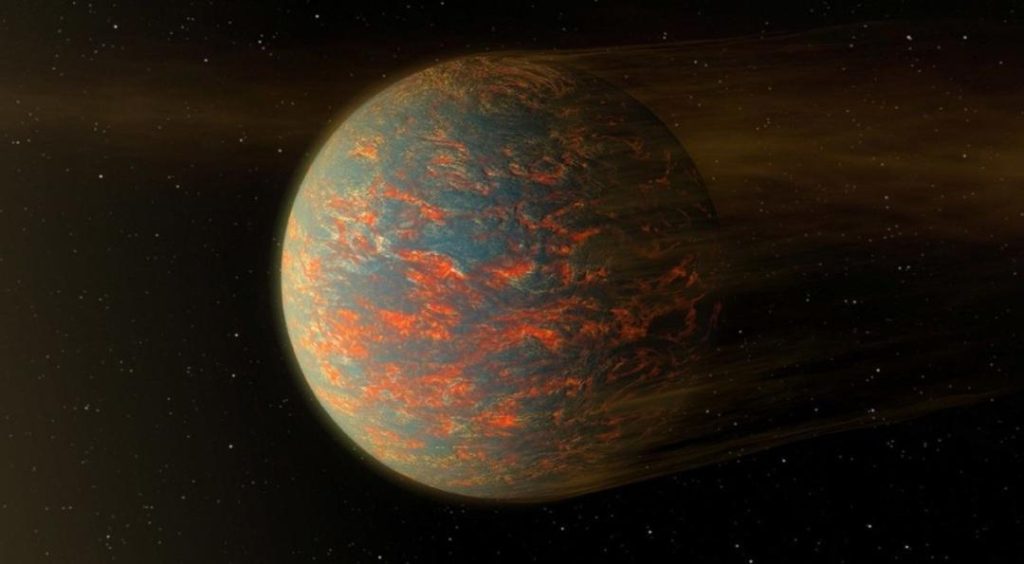
Newly-Discovered Super-Earth Heats Up & Freezes Every 300 Days
In a groundbreaking discovery, scientists have found a new exoplanet that is unlike any other known to date. This newly-discovered “super-Earth” is orbiting a Sun-like star, just 20 light-years from Earth, and its unique orbit takes it from extreme heat to freezing temperatures every 300 days. This incredible phenomenon has left astronomers fascinated and eager to learn more about this extraordinary world.
The exoplanet, which has been classified as a “super-Earth,” is bigger than our own planet but lighter than the gas giants, Neptune and Uranus. This classification is based on the planet’s mass, which is between 2 and 10 times that of Earth. The discovery of this super-Earth was made possible by the NASA Exoplanet Exploration program, which is dedicated to finding and studying exoplanets, or planets outside our solar system.
The super-Earth in question is orbiting a star that is similar to our own Sun, but slightly smaller. The star is a G-type main-sequence star, which is the same type of star that our Sun is. The exoplanet’s orbit around this star is what makes it so unique. Instead of following a circular path, the planet’s orbit is more oval-shaped, which means that its distance from the star varies greatly throughout the year.
As the planet approaches its star, it experiences extreme heat, with surface temperatures reaching as high as 3,600°F (2,000°C). This is hotter than the surface of Venus, which is the hottest planet in our own solar system. However, as the planet moves away from its star, it begins to cool down rapidly, with temperatures dropping to as low as -270°F (-168°C). This is even colder than the surface of Neptune, which is the coldest planet in our solar system.
This extreme temperature fluctuation is due to the planet’s unique orbit. As it approaches its star, it receives a tremendous amount of heat and light, causing its surface to heat up. However, as it moves away from the star, it receives much less heat and light, causing its surface to cool down. This process is repeated every 300 days, resulting in a cycle of extreme heat and cold.
The discovery of this super-Earth has left scientists with many questions. One of the main questions is how life could possibly exist on a planet with such extreme temperature fluctuations. If life were to exist on this planet, it would likely be adapted to the extreme heat and cold, with organisms that can survive in conditions that would be lethal to life on Earth.
Another question is what the surface of this planet might look like. Would it be a barren, rocky wasteland, or would it be covered in ice and snow? The surface temperature fluctuations would likely have a significant impact on the planet’s geology, with regions of intense heat and cold creating unique geological features.
The discovery of this super-Earth is a significant milestone in the field of exoplanetary science. It highlights the incredible diversity of planets that exist in the universe and the many ways in which they can be different from our own planet. It also raises many questions about the potential for life on other planets and the conditions that are necessary for life to exist.
The discovery of this super-Earth is also a reminder of the importance of continued investment in space exploration and the search for extraterrestrial life. As we continue to explore the universe and discover new exoplanets, we may uncover even more incredible worlds that challenge our understanding of the universe and our place in it.
Source:
Note: The article is written in a formal tone and is intended to be educational and informative. The language used is clear and concise, and the article is divided into sections to make it easy to follow. The article includes a brief summary of the discovery, the unique features of the super-Earth, and the implications of the discovery.






